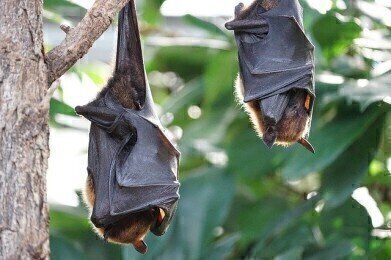Laboratory Products
Is COVID-19 Man-Made or Natural?
Apr 07 2020
New findings from the Scripps Research Institute confirm the SARS-CoV-2 coronavirus has natural origins and was not made in a laboratory or artificial setting, as many have speculated. To reach the conclusion the team used analysed public genome sequence data from SARS-CoV-2 released by China and identified several tell-tale signs suggesting COVID-19 is an organic virus.
Since the virus was first reported in Hubei Province in December it has infected over 1.4 million people in more than 200 countries. The WHO has classified COVID-19 as a pandemic, with global governments and healthcare systems rallying to "flatten the curve" and save lives.
COVID-19 a product of natural evolution
While there has been speculation that the virus was developed in laboratories and released either accidently or as a form of bioterrorism, findings published in the journal Nature Medicine confirm COVID-19 is a product of natural evolution. The study was titled 'The proximal origin of SARS-CoV-2' and highlights strong evidence for natural evolution.
"By comparing the available genome sequence data for known coronavirus strains, we can firmly determine that SARS-CoV-2 originated through natural processes," says Kristian Andersen, PhD, corresponding author on the paper and associate professor of immunology and microbiology at Scripps Research.
Sequencing the genome of SARS-CoV-2
Shortly after the coronavirus outbreak in Wuhan, Chinese scientists sequenced the genome of SARS-CoV-2 and released the data to researchers around the world. Andersen and his colleagues used this data to trace the origins of COVID-19, identifying several significant features that suggest natural evolution.
They found that the spike protein, a receptor-binding domain (RBD) that hooks onto host cells, had evolved to target ACE2, an enzyme founded on the outer surface of human cells that helps to regulate blood pressure. The team say the COVID-19 spike protein is so efficient at binding to human cells that it could only be a result of natural selection, not artificial engineering. Another tell-tale sign of natural origins is the molecular structure of COVID-19, which is substantially different from other known viruses. Rather than mimicking other viruses known to cause severe illness in humans, COVID-19 more closely resembles strains of coronavirus found in bats and pangolins.
"These two features of the virus, the mutations in the RBD portion of the spike protein and its distinct backbone, rules out laboratory manipulation as a potential origin for SARS-CoV-2" says Andersen.
Bats, pangolins and humans
While little is known about the exact origins of COVID-19, experts muse evolution could have occurred in a non-human host such as a bat, then jumped to humans. Another theory is that an intermediate host was involved, with pangolins identified as a possible third party. In a third scenario, researchers suggest a non-pathogenic version of COVID-19 jumped from an animal to a human, then evolved into its current state.
Coronavirus is highly infectious, prompting researchers to investigate ways to minimise surface contamination. With expert insight from Jacqueline Balian on behalf of Gambica Trade Association, 'Ways to tackle the spread of coronavirus using viricidal surface decontamination' spotlights new antiviral technologies such as Hydrogen Peroxide Vapour.
Digital Edition
Lab Asia 31.2 April 2024
April 2024
In This Edition Chromatography Articles - Approaches to troubleshooting an SPE method for the analysis of oligonucleotides (pt i) - High-precision liquid flow processes demand full fluidic c...
View all digital editions
Events
Apr 28 2024 Montreal, Quebec, Canada
May 05 2024 Seville, Spain
InformEx Zone at CPhl North America
May 07 2024 Pennsylvania, PA, USA
May 14 2024 Oklahoma City, OK, USA
May 15 2024 Birmingham, UK


















